In this tutorial, we will be showing you how to install and use Neofetch on your Raspberry Pi.
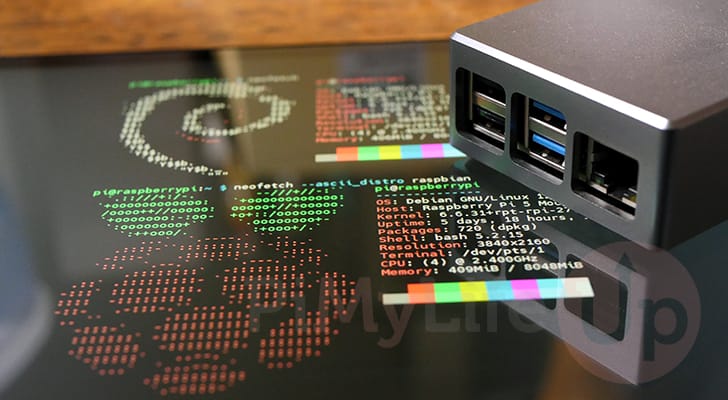
Neofetch is a super neat command line tool that is written purely in bash. It allows you to quickly and easily get information about your system in an easy-to-read, visually pleasing way.
Some of the information this tool returns are the operating system name, kernel version, number of packages, uptime, and more.
You can even configure Neofetch to display an icon of your choosing and control the information it will gather and display about your Raspberry Pi.
While Neofetch has been abandoned by its original developers, it continues to function well and is still a super easy way to get system information on your Raspberry Pi.
If you want to get extended information about your Pi, including live usage statistics, we recommend checking out Glances.
Equipment
Below is a list of equipment we used when setting up Neofetch on our Raspberry Pi.
Recommended
Optional
This tutorial was last tested on a Raspberry Pi 5 running the latest version of Raspberry Pi OS Bookworm (64-bit).
Installing and Using Neofetch on a Raspberry Pi
Over the following steps, we will show you the straightforward way to install Neofetch on your Raspberry Pi.
In addition to showing you how to install Neofetch, we will also show you how to use it to print information about your system. It is one of the easiest ways to get a good snapshot of your system with a single command.
If you are using the desktop variants of Raspberry Pi OS, you can open the terminal by pressing CTRL + ALT + T on your keyboard.
Installing Neofetch
1. Before installing Neofetch on our Raspberry Pi, we will need to ensure our current operating system is up-to-date.
You can use the following two commands to update the package list cache and upgrade any out-of-date packages.
sudo apt update
sudo apt upgrade -yCopy2. Installing Neofetch is such a simple process as it is available directly from the Raspberry Pi OS package repository. The repository even includes the latest release of the tool, so you don’t have to worry about running an older version.
All you need to do to install Neofetch is to use the following command within the terminal. This installation process won’t take very long as it is a relatively lightweight tool.
sudo apt install neofetchCopyUsing Neofetch to get your Raspberry Pi’s System Information
3. With Neofetch installed on your Raspberry Pi, all you need to do to get it to print out your system information is to run the following command.
neofetchCopyBelow, you can see the details of our system. Here, you can see how Neofetch provides you with just enough information about your system without it being overwhelming. It is also super useful information to provide to someone trying to help you with any issues you may be facing.
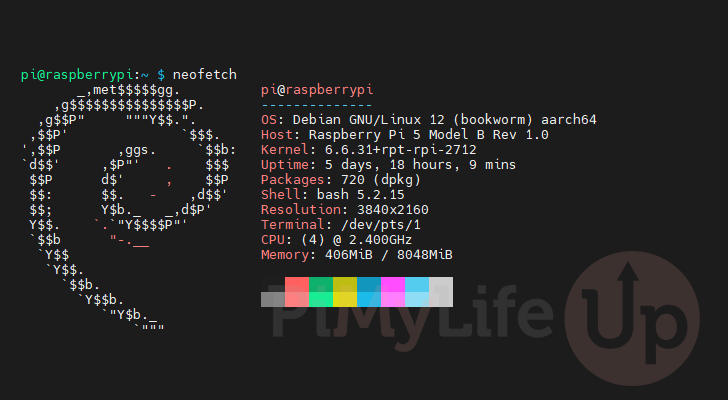
Hiding the Ascii Icon
4. By default, Neofetch displays an Ascii icon based on the Linux distribution you are running. As Raspberry Pi OS is Debian-based, this will sometimes be displayed as the Debian icon. Otherwise, it will be displayed as the Raspberry Pi icon.
While the ASCII art helps quickly identify what operating system you are running, copying the results can sometimes be made a bit messy.
Luckily you can get Neofetch to hide the icon and only display system information by using the “--off” option.
neofetch --offCopyBelow is an example of what the information will look like when output in the terminal without the ASCII icon.
pi@raspberrypi
--------------
OS: Debian GNU/Linux 12 (bookworm) aarch64
Host: Raspberry Pi 5 Model B Rev 1.0
Kernel: 6.6.31+rpt-rpi-2712
Uptime: 5 days, 14 hours, 37 mins
Packages: 720 (dpkg)
Shell: bash 5.2.15
Resolution: 3840x2160
Terminal: /dev/pts/1
CPU: (4) @ 2.400GHz
Memory: 409MiB / 8048MiBDisplaying the Raspberry Pi Icon
5. If you prefer to see the Raspberry Pi icon when getting your system information, don’t worry; Neofetch allows you to override the icon it is showing.
Using the “--ascii_distro” option followed by “raspbian“, we can tell Neofetch to display the Raspberry Pi icon.
neofetch --ascii_distro raspbianCopyThe screenshot below shows how the Raspbian icon is displayed instead of Debian.
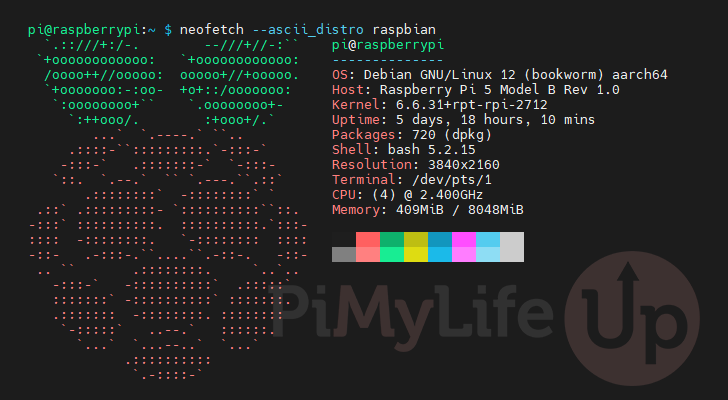
Conclusion
At this stage, you should now have a good idea of how you can use Neofetch to get information about your system.
One of the neatest things about Neofetch is how it presents the information to you. It gives you a quick overview of your system and a visually appealing and concise format.
Please post a comment below if you have had any issues with getting Neofetch installed on your Raspberry Pi.
If you find this project helpful, we recommend exploring the many other Raspberry Pi projects we have.


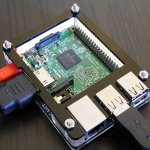


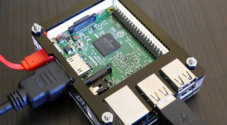

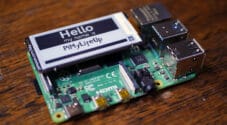

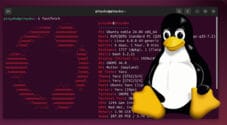
Interesting little app. I like it.